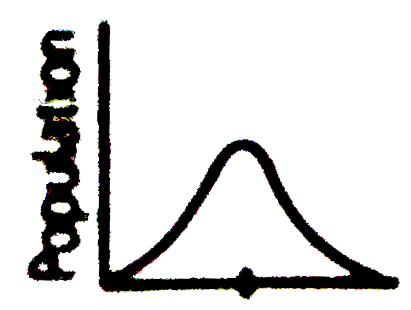If a trait A exists in 10% of a population of an asexually reproducing species and a trait B exists in 60% of the same population, which trait is likely to have arisen earlier?
Step by step video solution for If a trait A exists in 10% of a population of an asexually reproducing species and a trait B exists in 60% of the same population, which trait is likely to have arisen earlier? by Biology experts to help you in doubts & scoring excellent marks in Class 10 exams.
Updated on:21/07/2023Topper's Solved these Questions
- HEREDITY & EVOLUTIONBOOK - BETOPPERSCHAPTER - HEREDITY & EVOLUTIONEXERCISE - WORKSHEET 2
46 Videos
- HEREDITY & EVOLUTIONBOOK - BETOPPERSCHAPTER - HEREDITY & EVOLUTIONEXERCISE - COMPETITIVE WORKSHEET
34 Videos
- CONTROL AND COORDINATIONBOOK - BETOPPERSCHAPTER - CONTROL AND COORDINATIONEXERCISE - COMPETITIVE WORKSHEET
48 Videos
- HOW DO ORGANISM REPRODUCEBOOK - BETOPPERSCHAPTER - HOW DO ORGANISM REPRODUCEEXERCISE - COMPETITIVE WORKSHEET
44 Videos
Similar Questions
In 2019 if there is 10% increase in population of city A and 15% decrease in the population in B as compared to that in 2018 ,then the population of city A is what percentage more /less than in B , in that year ? (correct to one decimal places)

View SolutionThe following graph shows the range of variation among population members for a trait determined by multiple genes.

If this population is subject to stabilizing selection for several generations, which of the distribution is most likely to result ?
View Solution
Knowledge Check
Which of the following is not a direct conclusion that can be drawn from Mendel's Experiment ?
a) Only one parental trait is expressed
b) Two copies of each trait is inherited in sexually reproducing organism
c) For recessive trait to be expressed, both copies should be identical
d) Natural selection can alter frequency of an inherited trait.AOnly one parental trait is expressedBTwo copies of each trait is inherited in sexually reproducing organismCFor recessive trait to be expressed, both copies should be identicalDNatural selection can alter frequency of an inherited trait.In a city, 40% of the people are illiterate and 60% are poor. Among the rich 10% are illiterate. The % of the illiterate poor population is ?
A46%B44%C38%D36%10% of Brazil's population migrated to South Affrica 10% of the remaining migrated to America and 10% of rest migrated to Australia. If the female population which was left in Brazil remained only 3,64,500 , Find the population of Brazil city before the migration the female population was half the male population and this ratio did not change after the migration ?
A1800000B1500000C1600000D1400000
Assertion Polymorphism is the existence of two or more forms of the same species within the same population
Balanced polymorphism occurs when different forms coexist in the same population in a stable environment
View SolutionThe presence of recessive trait in a large population is be 16% the frequency of dominant trait in that population is :-
View SolutionThe given graph shows the range of variation among population members for a trait determined by multiple genes. If this population is subjected to disruptive selection for several generations, which of the following distributions is most likely to result?

View SolutionThe given graph shows the range of variation among population members for a trait determined by multiple genes. If this population is subjected to disruptive selection for several generations, which of the following distributions is most likely to result?

View SolutionWhich of the following statements describe natural extinction?
A. Extinetions abetted by human-activities.
B. Slow replacement of existing species
C. Also known as background extinction
D. A small population is most likely to be extinct.
View Solution
